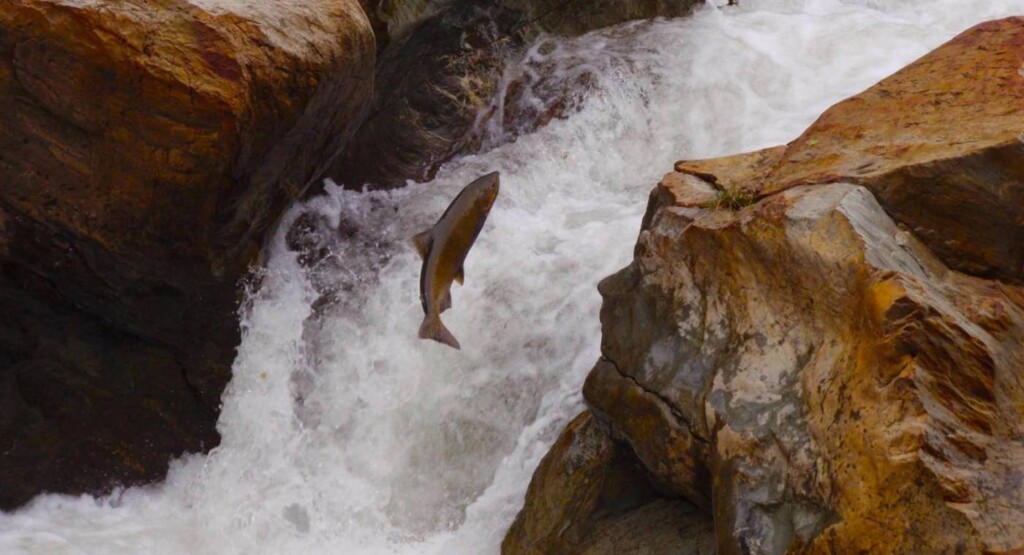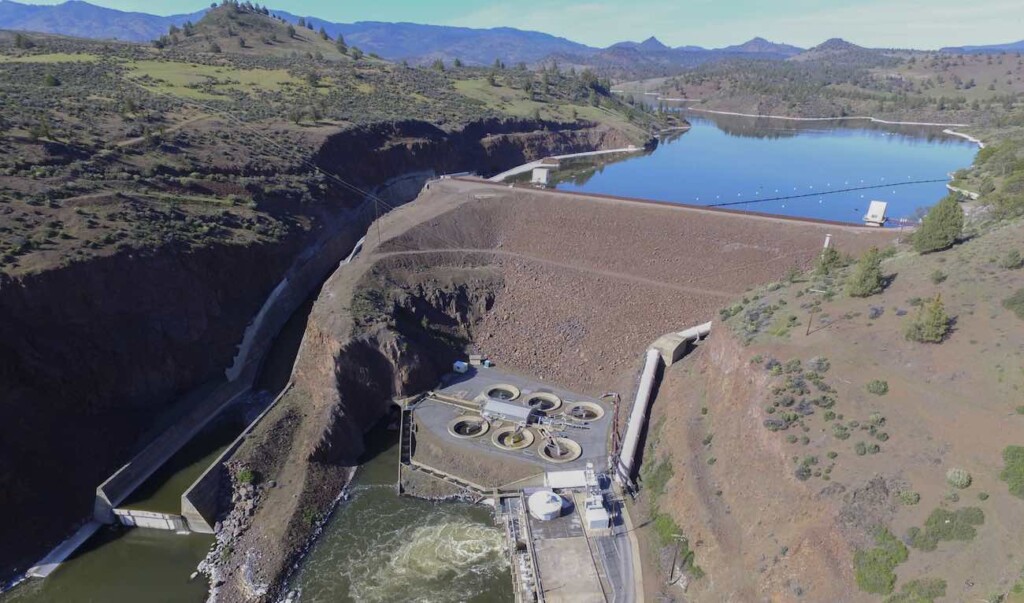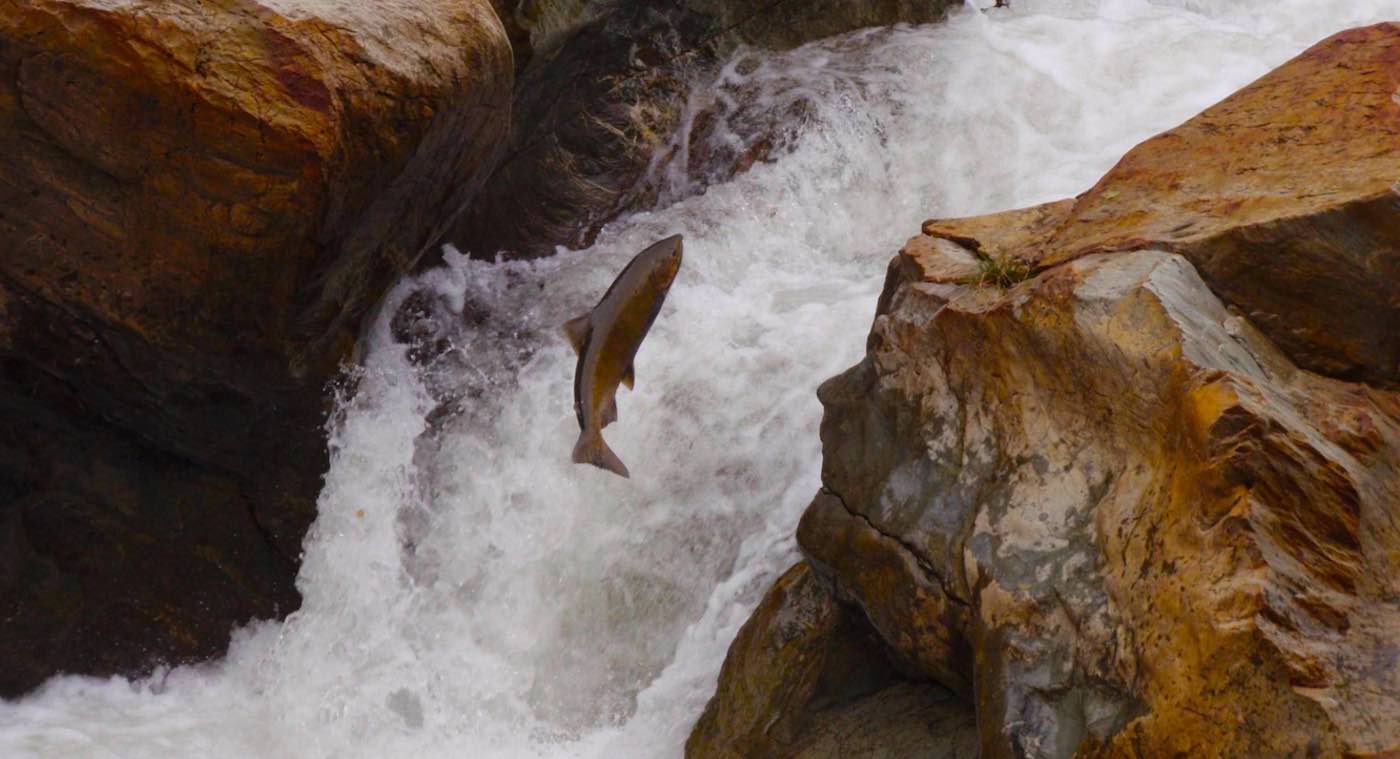
After 20 years of advocacy and legal challenges, the largest dam removal in history is returning the Klamath River in California to its natural state.
In partnership with tribal nations, the demolition of four hydroelectric dams will allow wild salmon from the Pacific to run upstream and spawn again as they haven’t done for 100 years.
This week, the Klamath River Renewal Corporation began preparing a stretch of the river to flow freely for the first time in a century.
The soon-to-be dismantled Klamath Hydroelectric Project has blocked fish passage and altered river flows in a place sacred to the Shasta Indian Nation.
In 1925, the construction of Copco No. 2 dam was completed, diverting the river, and in the absence of sustained flows, a dense stand of trees colonized the riverbed within the steep canyon. The Yurok Tribe joined the partnership to clear the alder and cottonwood trees from the river corridor, while leaving all floodplain vegetation intact.
“It fills my heart to know that salmon will migrate through this river reach on their way to spawn in the upper basin,” said Yurok Vice Chairman Frankie Myers. “For the last century, we have watched the dams suffocate the life out of the river (and) I would like to thank the KRRC and the Shasta Indian Nation for the opportunity to help our salmon runs and our river recover for our children and the next generations.”
The Klamath dam removal project broke ground in June 2023, after the Federal Energy Regulatory Commission (FERC) issued the approval that allowed construction crews to get to work on the deconstruction of Copco No. 2 dam, due to be fully removed by the end of September. Iron Gate, JC Boyle and Copco No. 1 dams will be deconstructed next year in what is considered the largest salmon restoration project in history.
“Seeing the revitalization of this river canyon is incredible,” exclaimed Mark Bransom, CEO of the Renewal Corporation.
ALSO CHECK OUT: Chinook Salmon Introduced to Mountain Streams Not Inhabited for 100 Years

Prior to construction of the dams, the Klamath supported one million spring and fall Chinook or king salmon as well strong populations of steelhead trout, sturgeon, Pacific lamprey and many other native fish species. This fall, it is predicted that less than 25,000 Chinook will return to the river.
But, after the dams are removed, fisheries experts expect fish numbers to gradually increase in response to renewed access to historic spawning grounds and improved ecosystem health.
The four dams had denied salmon access to hundreds of miles of historical habitat, degraded water quality, and fostered the spread of fish diseases. Scientific studies and dam removal efforts in other watersheds demonstrate that removing dams can reverse these trends.
LOOK: 13-Foot Sawfish Spotted Farther North Than Any in Decades Hints at Recovery of Species
This month’s demolition work is promising not only the return to ancestral ways of life for the various tribes on the Klamath River, but a robust increase in commercial salmon fishing because the salmon runs are less than 5% of their historical abundance.
“The Klamath salmon are coming home,” proclaimed Yurok Chairman Joseph James. “The people have earned this victory and with it, we carry on our sacred duty to the fish that have sustained our people since the beginning of time.”
SPLASH SOME GOOD NEWS on Fishing Lovers Using Social Media…




















